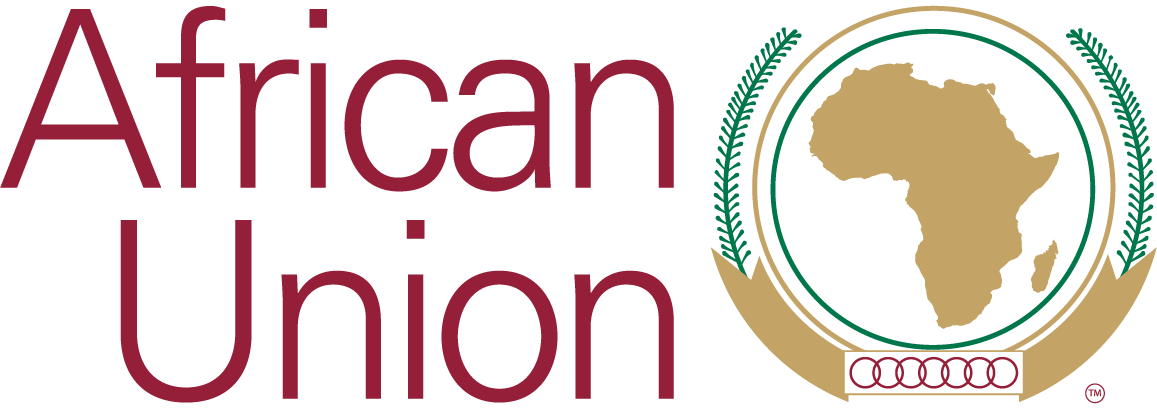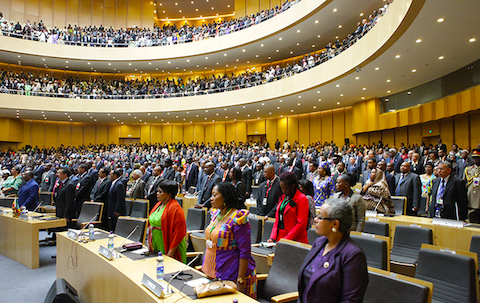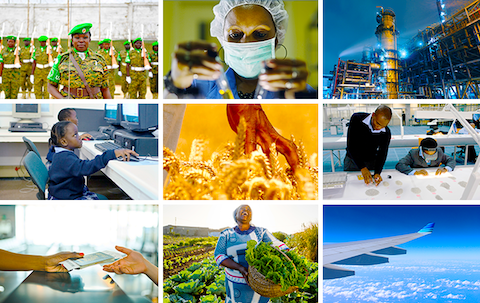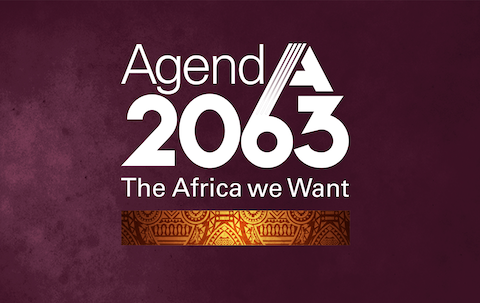Africa’s Commodities Strategy; Value Addition for Global Competitiveness
Africa’s Commodities Strategy; Value Addition for Global Competitiveness

Africa has about 12% of the world’s oil reserves, 42% of its gold, 80%–90% of chromium and platinum group metals, and 60% of arable land in addition to vast timber resources. Africa experienced a commodity boom during the early 2000s translating into the continent’s unprecedented growth that was only disturbed by the onset of the global financial crisis of 2008. Whilst the Continent was able to recover from this global shock by 2010, and rebounded with a strong growth rate of 4.6% on average, this boom did not translate in to consummate economic diversification that would have led to faster social-economic development for Africans. In addition most African economies still rely heavily on commodity production and exports, with minimal value addition and even fewer forward and backward linkages to other sectors of the economy.
However, in recent years and prior to the COVID-19 Pandemic, many African economies had been pursuing reforms aimed at integrating into the world economy and were as a result, experiencing substantial economic growth. This growth has primarily been supported by commodity exports. Transforming Africa from a raw materials exporter to a producer of market-competitive value added products will require the continent to integrate into regional and global value chains and promote horizontal and vertical diversification anchored in value addition, innovative approaches and local content development.
The COVID-19 pandemic has crippled nearly every economy across the globe, there is consensus across the African continent on the need to build a strong and resilient economy to withstand future shocks. This will include developing an integrated and complementary African value chains, to support the commitment to transform Africa from a raw materials exporter to a producer of market-competitive value added products. The COVID-19 crisis combined with the implementation of the African Continental Free Trade Area (AfCFTA) beginning in January 2021, call for innovative policies to realize Africa’s full potential.
The challenges arising from continually fluctuating commodities prices and Africa’s limited value addition to its natural resources renders Africa vulnerable to the external shocks derived from export dependency and therefore necessitates a holistic rethinking and a new approach to the question of how Africa’s commodities wealth can drive the continent’s development. The recognition of the challenges and opportunities from Africa’s commodity wealth has been reflected in different decisions of the African Union (AU) including the Arusha Declaration on African Commodities as well as other frameworks such as the Comprehensive Africa Agriculture Development Program (CAADP), the Africa Mining Vision (AMV) and the Strategy for the Accelerated Industrial Development of Africa (AIDA). With the adoption of Agenda 2063 as the strategic framework to guide Africa’s inclusive economic growth, the AU undertook to consolidate and guide the development of an Africa wide commodities strategy that will ensure a more coherent and collaborative process of African states developing, managing and benefiting from their natural resources and collectively positioning the continent to live up to its potential as an economic powerhouse.
The African Commodity Strategy is one of the flagship projects under the African Union (AU)’s Agenda 2063. It is also an integral component for the successful outcomes of the Boosting Intra-African Trade (BIAT) Action Plan.
What does the continental Commodities Strategy Propose?
The continental Commodities Strategy is a flagship project of the AU’s Agenda 2063 and envisions a commodity-led industrialisation: developing Africa’s commodities as a driver for achieving the structural, social and economic transformation of the continent. The strategy aims to identify, formulate and drive the implementation of policies and programmes that will enable African countries to add value, extract higher rents from their commodities, integrate into global value chains and promote vertical and horizontal diversification anchored in value addition and local content development.
To achieve these objectives, in its formulation, the Commodities Strategy will address several key issues including:
- Reviewing the state of play for high-priority commodities sectors in Africa, namely agriculture, mining, and energy; including the examination of current trends and outlooks, to identify sector-specific opportunities and how to address any existing challenges.
- Addressing Commodity Price Volatility which continues to be a critical feature of international commodity markets and thus creates challenges for macroeconomic management and exposes developing countries to greater macroeconomic uncertainty.
- Driving Commodity based Industrialisation which can serve as a launching pad for long term diversification in new non commodity sectors, if well supported by robust industrial policies. These goals are achievable given that Africa boasts significant human and natural resources that can be used to promote industrialisation and structural economic transformation through value addition strategies in all sectors. With Africa’s growing, predominantly young, skilled and urbanising population, as well as the continent’s endowments in many natural resources, including plentiful land and fertile soils, oil and minerals, commodities can play a crucial role in the drive to industrialisation. However, a key challenge for African countries is to ensure the design and implementation of effective policies that promote industrialisation and economic and structural transformation. The Commodities Strategy is therefore of paramount importance in assisting Africa realise the full benefits from its natural resources for the betterment of its people.
Positioning Africa as a Global Player in Trade.
A clearly articulated African Commodities Strategy will ensure the continent takes a stand and becomes a significant player in global trade by addressing some of the activities of transnational corporations which have been fragmenting their production processes, so as to efficiently exploit different countries’ comparative advantages along (regional, subsequently global) value chains, forming a global division of labour. This has led to an increase in international trade in intermediate goods, which now accounts for about half of global trade and of which Africa accounts for 2-3%. Despite its small size, intra-African trade in intermediates is far more diversified than the corresponding trade with the rest of the world. This therefore offers an opportunity for the continent to position itself strategically in line with its resource endowments to actively participate in the global value chains as compared to what is obtaining currently thereby effectively putting itself in a sure path towards industrialization.
For Africa to take full advantage of and participate effectively in global value chains, it will need to effectively address its regional value chains and address other barriers that have led to low levels of intra-regional trade such as its inefficient trade related infrastructure and logistics, among others.
Some ongoing initiatives by the African Union to address Africa’s commodities include Agro-processing and Value chain Development within the framework of the CAADP, harnessing the Blue Ocean economy and benefiting from Africa’s marine resources through the development of the Africa Integrated Maritime Strategy and using mineral resources to catalyse broad-based growth and development through the African Mining Vision. In addition the implementation of the African Continental Free Trade Area (AfCFTA) and the launch of the Single African Air Transport Market (SAATM) will support the development of intra-African trade which is key to boosting trade and development of Africa’s commodities.











